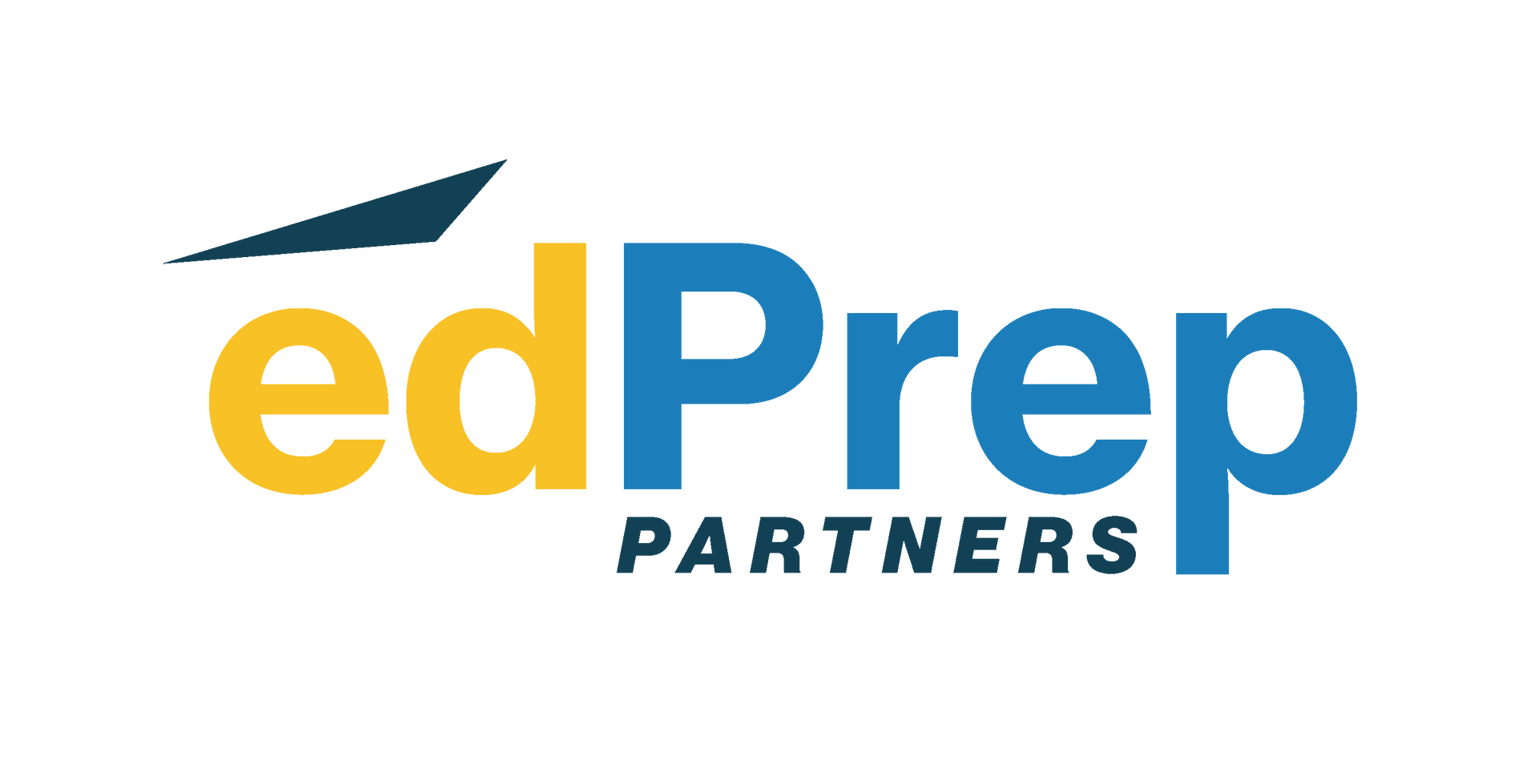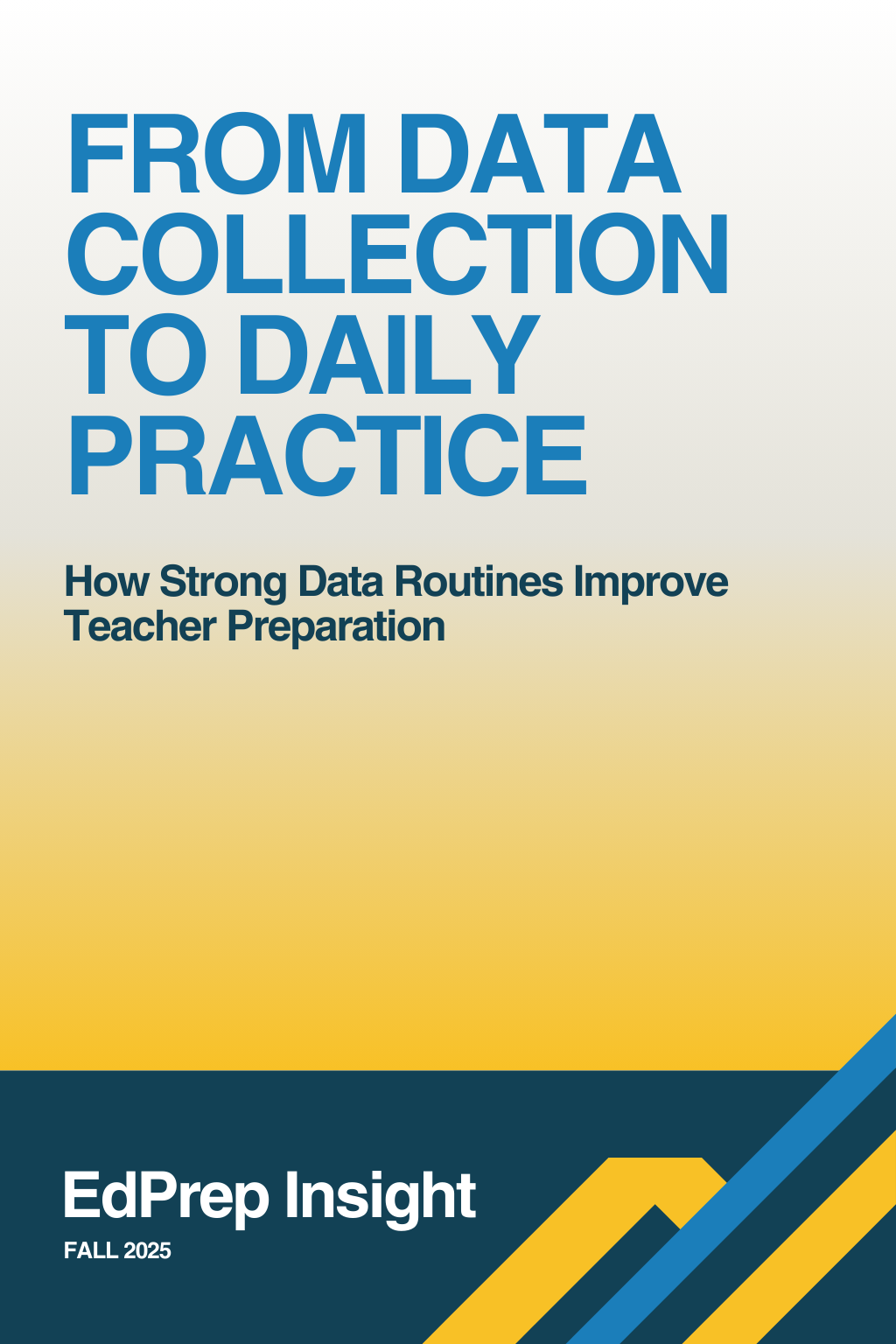From Data Collection to Daily Practice: How Strong Data Routines Improve Teacher Preparation
From Data Collection to Daily Practice: How Strong Data Routines Improve Teacher Preparation
Improving Candidate Development and Strengthening
Let’s Start Using Data to Improve Preparation
Educator preparation programs are not short on data. Programs collect everything from candidates’ instructional performance to certification exam attempts to stakeholder surveys. But when that data gets pulled out for a faculty meeting once a year or tucked away in a compliance folder, it rarely changes what matters most: how candidates are being prepared, supported, and developed in real time.
The challenge is not necessarily a lack of data.
It is a lack of data routines. Too often, data becomes a performance-something reviewed to meet compliance or displayed on a dashboard rather than used to drive change. The issue is not too much information. It is that the right people are not looking at the right data at the right time, with the intention to act.
What preparation programs need is not more data, rather better (and often simpler) infrastructure and processes for using the data they already have. Programs across the country must move from passive collection to active improvement. When implemented with intention and consistency, data routines become the mechanisms that surface patterns, prompt timely action, and distribute decision-making across the people closest to candidate development.
Strong programs and teacher educators do not use data just to understand what happened. They use it to decide what will happen next, and then they act on it.
Data Routines are used to:
- Monitor candidate development across coursework and clinical experiences Strengthen faculty and clinical supervisor practice
- Identify and address misalignment between candidate expectations and performance
- Inform improvements in coursework, coaching, and support structures
Data routines are not something that happens once a semester. They are built with intention, follow a consistent cadence, and bring everyone to the table.
What Is a Data Routine?
A data routine is not a dashboard. It’s not a spreadsheet review. And it’s not a one-time meeting. Data routines are the structured, recurring processes that help educator preparation programs monitor performance, identify trends, and take meaningful action. They are improvement mechanisms, embedded into the core work of faculty & clinical supervisors’ teaching, coaching, and candidate support. High-quality routines follow a predictable pattern:
A Simple, Powerful Cycle:
Frame the purpose before diving in. Why are we looking at this data? What decisions are we trying to make? What assumptions do we have?
Describe what the data shows. What patterns are emerging? Where are the gaps or inconsistencies across candidates, teacher educators, or teaching spaces? Are we seeing progress, or missing opportunities?
Plan clear, specific next steps. What will we do differently? Who is responsible? How will we know if it worked?
This cycle may sound straightforward, but when approached with rigor and discipline, it shifts data from passive to powerful. It creates space for shared reflection, timely action, and real ownership. Most importantly, it keeps the focus on what matters most: preparing future teachers more effectively.
The Five Qualities of High-Quality Data Routines
Not all data use is created equal. A spreadsheet or data system is not a strategy. A dashboard is not a routine. And reviewing data without action is not continuous improvement.
High quality data routines go beyond collection and compliance. They are structured, intentional, and focused on improving the experience and outcomes of those doing the work—especially teacher educators and teacher candidates. They don’t just identify gaps. They clarify what must change in the design, content, and actions of coursework, clinical experiences, and support(s) for candidates’ development in teaching.
We can use five criteria to define high quality data routines in educator preparation:
1. Rooted in Candidate Development
The strongest routines are anchored in instructional practice and candidate performance. They are designed to improve preparation, not just document it. Ask: Does this routine lead to better prepared teacher candidates—or is it instead for something (or someone) else?
2. Connected to Teacher Educator Practices
High quality routines support growth not only in candidates—but in those who prepare them. Faculty, clinical supervisors, and mentors must make the most significant shifts in practice. Ask: Are teacher educators using the data to examine and strengthen their own instructional and coaching practices?
3. Align Coursework and Clinical
Strong data routines reveal whether what candidates learn in coursework is showing up in their performance—and where it’s not. They surface misalignments, clarify expectations, and drive tighter integration across candidates’ developmental settings. Ask: Does this routine expose gaps or disconnects between coursework and clinical practice—and help address them?
4. Timely and Actionable
High quality routines happen on purpose, at the right moments, and result in clear decisions. They use enough data to spark action, without overwhelming or delaying it. Ask: Is this routine timely and focused enough to drive real changes in candidate support or program practice?
5. Visible, Shared, and Communicated
High quality data routines don’t sit in spreadsheets/data systems or stay siloed in leadership meetings. They are shared across roles, informed by those teacher educators closest to candidates, and clearly communicated to drive action. Visibility builds trust. Shared ownership builds momentum.
Ask: Who is in the room—and who else needs to be? Are decisions and insights shared, or stuck?
Common Data Routine Types in Strong Programs
Here are eight high-leverage data routines commonly used by strong programs:
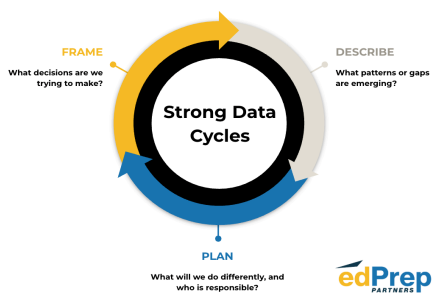
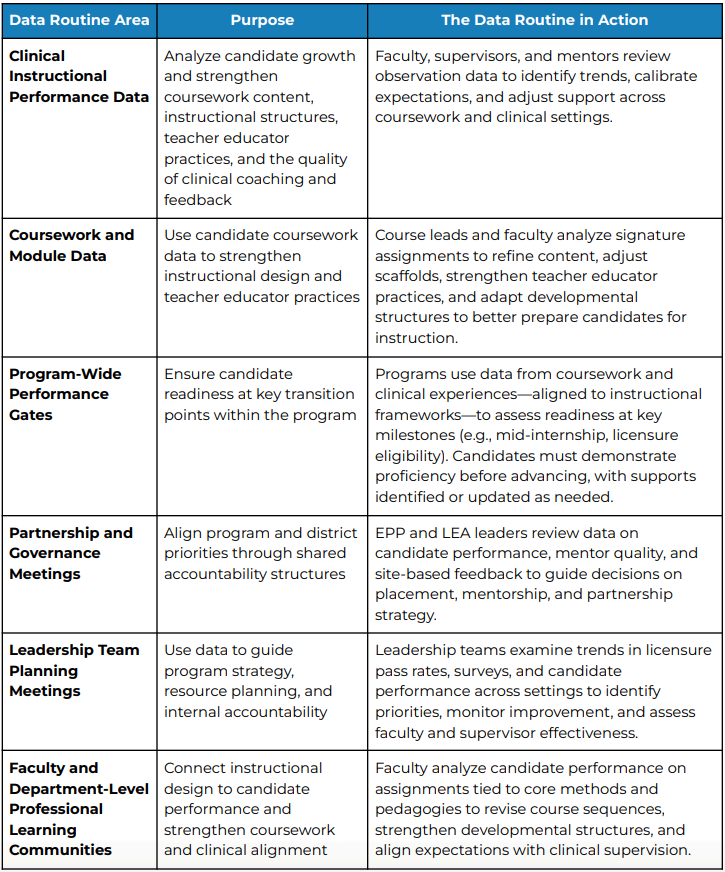

What sets strong data routines apart isn’t that they use data—it’s how, how often, and with whom. They are embedded in the daily work of preparation: consistent, collaborative, and purpose driven. They shape how that work gets done.
The Shift We Need: From Data Collection to Development
The strongest preparation programs model for teacher educators the same habits they expect from teacher candidates: collect, analyze, plan, enact, and improve. In these programs, data isn’t a sidebar, it’s part of doing the work. It shapes how teacher educators teach and how candidates learn.
Let’s embed data routines into the daily work of preparation. Let’s use data to strengthen the people and practices that shape candidates’ preparation, every day.
Let’s make teacher preparation better—together.
Calvin J. Stocker
Founder & CEO, EdPrep Partners
Stay Connected
If you're interested in learning more, exploring collaboration or technical assistance, or just want to catch up, we’d love to connect:
About EdPrep Partners
Elevating Teacher Preparation. Accelerating Change.
EdPrep Partners is a national technical assistance center and non-profit. EdPrep Partners delivers a coordinated, high-impact, hands-on technical assistance model that connects diagnostics with the support to make the changes. Our approach moves beyond surface-level recommendations, embedding research-backed, scalable, and sustainable practices that most dramatically improve the quality of educator preparation—while equipping educator preparation programs, districts, state agencies, and funders with the tools and insights needed to drive systemic, lasting change.
